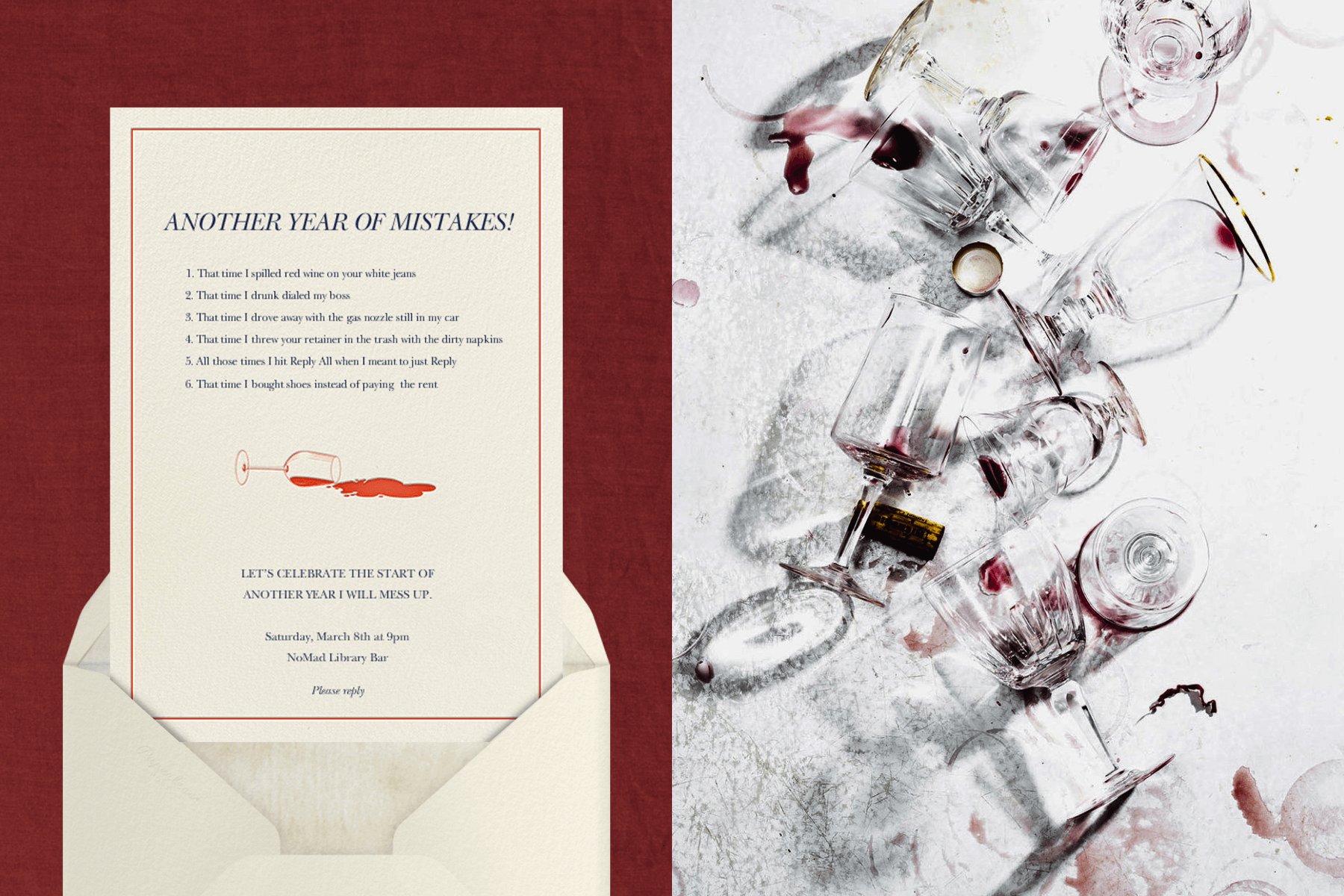How to host (and attend) any party, politely: 10 etiquette tips from Lizzie Post

Things change all the time. Take telephones, for example—when’s the last time you twirled one of those curly cords around your finger while you talked for hours to your best friend or crush? We’ll give you a minute to think about it.
But something that hasn’t changed? The power of good etiquette, particularly when hosting guests or attending a party. Sure, the technology might be a bit different—hello, QR code cocktail menus and digital thank you notes—but being polite will never go out of style.
The same can be said for the world’s most famous purveyor of manners, Emily Post, whose timeless advice resonates just as much today as it did 101 years ago (when her landmark “Etiquette” guide was first published). Over the last century, she’s inspired countless generations of party people to host and attend get-togethers in a way that’s proper and polite, without being too prescriptive or stuffy.
Carrying on their great-great-grandmother’s legacy, Lizzie Post and Dan Post Senning—the two co-presidents of The Emily Post Institute—have updated Emily’s 1922 tome to include new information and insights for modern-day hosts, all while maintaining Emily’s timeless tone and tips.
We spoke with Lizzie to uncover her top 10 party etiquette swear-by’s for being an eminent host or guest. Read on for the inside scoop.
Table of Contents
Etiquette tips for hosts
“We don’t host as formally on a regular basis as much as Emily describes,” Lizzie Post says, referring to her famous ancestor’s 1922 “Etiquette in Society, in Business, in Politics, and at Home.” But, she explains, the first rule of hosting hasn’t changed:
“To be welcoming and [put] people at ease.”
If you can stick to these six etiquette rules, you’ll host a memorable gathering where every guest feels comfortable—even if you spill a little sangria along the way.
 “Party Person” by Paperless Post.
“Party Person” by Paperless Post.
1. Give ample time for RSVPs
Let’s start with the party celebration invitations: How much notice is sufficient to help your guests prepare?
“It really depends on you, your entertaining style, and what is going to be convenient,” says Post. However, there are a few factors to consider before you decide:
- Formality: In general, the more formal the event, the earlier you should send those invitations to each party guest. If it’s an important occasion, like a wedding or milestone birthday, your attendees may need more time to prepare. You’ll also probably want to make sure as many guests can attend as possible.
- Timing: Summer and the end of the year are the most popular times to hold parties. If you’re planning a gathering during either time, it’s probably a good idea not to cut it close. When hosting a New Year’s Eve party, for instance, Post recommends sending invites at least two months in advance: “It’s worthwhile to get your planning into action by October.”
Another tip that can make RSVPs just as helpful for you, the host: Rather than simply prompting guests to RSVP, request a ballpark deadline for their responses in your invitation. “Putting an RSVP date really helps,” says Post. “As a host, it gives you a point in time to follow up on those RSVPs.”
 Image via Anne of Carversville; “The Best Dressed” by Paperless Post.
Image via Anne of Carversville; “The Best Dressed” by Paperless Post.
2. Let your invitations set the tone
Being a welcoming host with proper etiquette means finding that fine line between hospitality and sticking to your vision. This makes tact a crucial part of communicating party rules and aesthetics to guests.
One of the best ways to do so subtly is with your party invitations. The look, feel, and text within your invites sets the stage for your formality, dress code, and atmosphere guests can expect.
With digital invitations, though, guests “can’t feel the paper or see the debossing,” Post reminds us. If attire is an important part of the big day, Post recommends adding a dress code. Even a line as simple as “festive attire” will do.
3. Plan to accommodate guests’ needs in advance
As a host, you want all your guests to feel cared for and encouraged to participate in the festivities. With that in mind, it’s always an excellent idea to give guests the opportunity to voice needs related to:
- Dietary restrictions
- Scent or sound sensitivity
- Accessibility, for both physical and cognitive needs
Depending on the type of event you’re hosting (an adults-only dinner vs. a barbecue, for example), it’s helpful to include in your invitation the names of all the guests who are invited. If you’re not inviting kids or pets, for example, simply list only the names of the invited guests on the invitation.
If your guest list is at capacity or you’re throwing an event like a block party, you may not be able to meet everyone’s needs alone. In these cases, give guests the freedom to see to it that they’re cared for.
So, rather than trying to engineer a keto-friendly, gluten-free, and vegan menu, make it a potluck. Or, if you plan on having a light show, let guests know about the entertainment beforehand. That way, people who need accommodations can plan well in advance.
4. Lead guests through your party
As the party emcee, you’ll probably find you’re the most in “host mode” after those first few guests trickle in. However, it’s important to give your attention to the first arrival so you can make them feel welcome, and show you appreciate their being on time.
To that end, you’ll want to ensure your party’s core mise-en-place is set up by your arrival time and keep the fussing to a minimum.
“As the host, it’s up to you to guide your guests. That’s everything from welcoming them when they are coming through the door, finding food and drinks, and starting them off in conversations by introducing them to other guests,” says Post.
The takeaway: The more comfortable your guests feel from the beginning, the less you’ll need to dote on them (and worry about their enjoyment!) as the party progresses.
 “New Year, New Mistakes” by Derek Blasberg for Paperless Post; Image via Eva Kolenko.
“New Year, New Mistakes” by Derek Blasberg for Paperless Post; Image via Eva Kolenko.
5. Prepare for unplanned moments
Countless things can go awry at parties, from running out of birthday cake to being stuck cleaning up a cranberry mocktail spill.
But remember: “You are the leader in this situation,” says Post. And most importantly, “You’re the one who’s going to know whether you’ve got salt or seltzer to help clean that stain.”
That said, it never hurts to be prepared for any confetti that may hit the fan by:
- Keeping cleaning supplies close by: Seltzer, salt, baking soda, or red wine remover are all wonderful to keep on hand for stains on guests’ clothes (or your carpet).
- Having an emergency change of clothes: Keep 1 or 2 dress shirts for men and 1 or 2 blouses for women. This can help spare guests, especially older or more manners-conscious ones, from undue embarrassment.
- Compiling a basic safety kit: Bandages, antibacterial solutions, allergy medicines, and ibuprofen are all staples every host should keep on hand.
- Arranging a kids’ area: If any parents bring their little ones along, be sure to set up a calming, entertaining, age-appropriate kids’ area. Think soft pillows and blankets for sleepy tots and an entertaining child-friendly movie for the older set.
But no matter what happens, says Post, “Recognize that all parties can have moments like these, and there’s probably very little (if anything) that you’ve done wrong.” And it goes without saying: you should never embarrass a guest for making a mistake at your house. Above all, your job as a host is to keep guests comfortable by staying calm—and forgiving—under pressure.
6. Give subtle cues when the party’s over
“Party’s over, folks!”
This line may work in the movies, but in real life, there are far more graceful ways to let guests know it’s time to go home:
- Behavioral cues: Dialing down the music, dialing up the lighting, and doing some light clean-up like putting finger food away (or the Twister setup, if things got wild) gestures subtly that it’s time for a collective scene change.
- Verbally: Lizzie Post tells us her favorite lines for off-ramping a soirée: “It’s been so wonderful having you all here,” or, “Thanks for coming, I’ve had a wonderful time—but I’m going to have to call it a night.”
You’ll likely find that once a few guests start putting on their coats and delivering their adieus, the rest will follow. If they don’t, try approaching people individually and making soft plans for future get-togethers.
Etiquette musts for guests
As indispensable as hosts are to parties, guests are the ones who take their cues and give the party its joie de vivre. So let’s turn the tables: what do modern party-hoppers need to know about proper guest etiquette?
1. RSVP on time
When’s the best time to send in your RSVPs? According to Post, “Promptly.”
She adds, “Even if you’re a ‘maybe,’ you can get in touch and say something like, ‘I just got your invitation, I’m really excited about it—I’m still waiting to hear back from my in-laws about whether or not we’re doing X, Y, Z that week.’”
Overall, do what’s most considerate. “Acknowledging the invitation is thoughtful. Someone just invited you to a party! That’s really nice.”
 Image via Town & Country; “Cocktail Jigger” by Paperless Post.
Image via Town & Country; “Cocktail Jigger” by Paperless Post.
2. Practice the art of conversation
Whether at a festive event or on the elevator, we’ve all encountered that dreaded lull in conversation. Fortunately, etiquette (and a pinch of psychology) teaches us some foolproof techniques for keeping the spark of conversation alive:
- Don’t lead with work: Most people will appreciate striking up a conversation that starts with anything other than, “So what do you do?” In Post’s view, “asking people what they’re interested in or what they like to spend their time doing” leads to a far more interesting conversation.
- Let the other person lead: An expert conversationalist lets the other person reveal themselves at their own pace. Post advises staying away from topics like relationship status, countries of origin, and (you guessed it) politics to start. Smooth talkers let others reveal what they’re comfortable with, picking up on the conversational boundaries along the way.
- When in doubt, listen: Psychologists note we often miss out on connections because we’re so caught up anticipating our next line. If you have social anxiety or get tongue-tied, try focusing on listening more than talking. Many people open up quickly when others express sincere interest in what they have to say.
For more conversation starters, read our article on the best ones for any type of party.
3. Limit your phone time
Etiquette experts have yet to come to a consensus about phone use at parties, so it’s worth returning to our #1 rule for hosts who are orchestrating a party: Making guests feel welcome.
While there are exceptions, make a point to keep your phone use to a minimum. When we’re busy locked into our devices, we lose out on the best part of parties.
 “Prairial” by Putnam & Putnam for Paperless Post.
“Prairial” by Putnam & Putnam for Paperless Post.
4. Send thank you notes
Thank you notes are a beautiful gesture that can be sent by guests to the host, or by hosts post-event, to thank guests for coming.
Many of us remember writing out analog thank you cards from birthday parties and holidays. Fortunately, the gesture is endlessly easier to execute with digital cards. With Paperless Post, you can browse thank you notes for virtually any occasion, including (but not limited to):
Nail modern party etiquette with Paperless Post
There’s plenty to stay on top of when you’re attending a hotly anticipated event, whether it’s those little personal touches or the work that goes into organizing it. Paperless Post lets you tackle both in one fell swoop with digital invitations that help you track details with precision.
Our virtual card experiences let hosts track who’s coming and each guest’s party preferences (soup? salad?)—all while saving paper and postage along the way. Browse beautiful, thoughtful digital stationery from save the dates to thank you cards and pull off your party spectacularly with Paperless Post.
We’re also here to help you find answers to all of your party-related needs, so whether you’re wondering how to address wedding invitations, what hosting gift to bring, or what successful event budgeting looks like, Paperless Post is here to help.
Whatever the occasion, find exclusive designs to suit your style and make planning a breeze.




